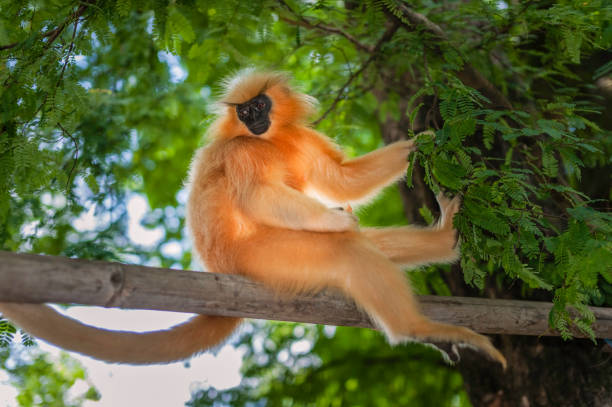





Copyright infringement not intended
Picture Courtesy: https://www.istockphoto.com/photo/gees-golden-langur-guwahati-assam-india-gm639211130-115077065
Context: The latest survey conducted by the Primate Research Centre NE India (PRCNE), Assam Forest Department, Bodoland Territorial Council, Salim Ali Centre for Ornithology and Natural History (SACON), and Conservation Himalayas, estimated the population of golden langurs in India to be around 7,396.
Key Highlights of the survey
About Golden Langur
|
PRACTICE QUESTION Q. Consider the following statements in the context of the Golden Langur: 1. They are found in the Western Ghat. 2. Their fur changes colour seasonally. 3. Males are larger and heavier than females. 4. They are primarily herbivorous. 5. They are classified as critically endangered by the IUCN Red List. How many of the above statements are correct? A) Only two B) Only three C) Only four D) All five Answer: B Statement 1 is incorrect: Golden Langurs are found in a small region of Assam and the neighbouring foothills of the Black Mountains of Bhutan, not the Western Ghats. Statement 2 is correct: The fur of the Golden Langur changes colour seasonally. In the winter, it's a dark golden chestnut, and in the summer, it's more cream-coloured. Statement 3 is correct: Males are larger and heavier than females. Males can weigh up to 26 pounds (12 kg) and have a longer tails than females. Statement 4 is correct: Golden Langurs are primarily herbivores, meaning they mainly eat leaves, fruits, seeds, buds, and flowers. Statement 5 is incorrect: Golden Langurs are classified as endangered by the IUCN Red List due to habitat loss and fragmentation. |







© 2025 iasgyan. All right reserved